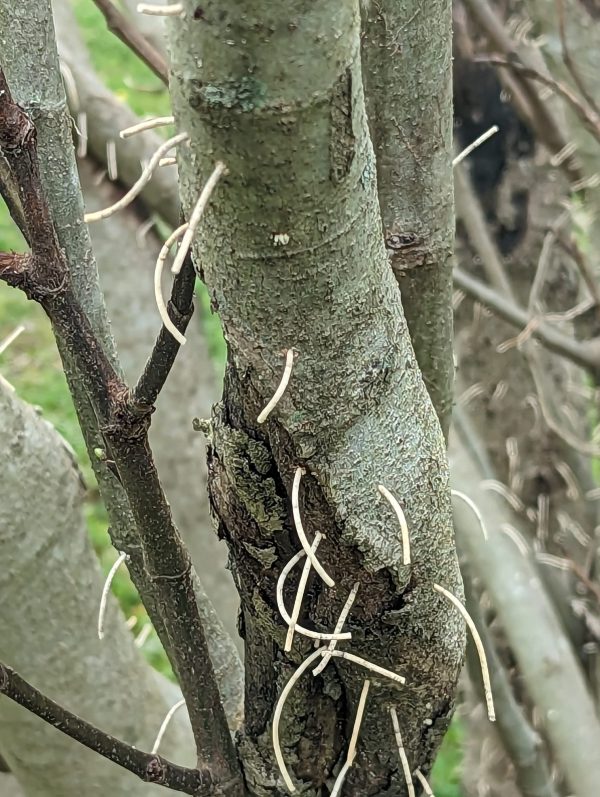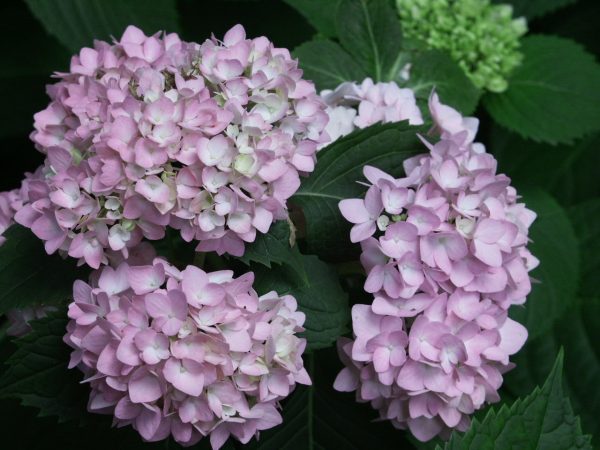Taming Landscape Erosion
For the first two weeks in June I felt like Sisyphus, the Greek legend who was condemned to push a boulder up a hill whereupon it fell back down the hill and he started rolling once again.
I believe I transported the same bale of pine straw up the sloping path in my back yard at least four times. Every thunderbuster that came through our neighborhood arrived the day after I had raked the straw from the bottom of the path up to the top again.
Having the same problem, Maura Davies wrote me asking, “What type of mulch would be least likely to get washed away and help keep soil in place during our frequent torrential rains?”
I can state from experience that neither pine straw nor pine bark chips always fill the bill. I have to temper my words, though, knowing that the angle of a slope and the volume of water descending it determine how badly a mulch washes. Cypress mulch is reputed to be heavier than other materials, excluding stones, but even cypress will float under some conditions.
In my experience, any slope that falls more than twelve inches in ten feet has the potential to have erosion problems. Water that flows down such a slope can be slowed by mulch, thick plant material or terracing.
MULCH At my house, we use pine straw or bark chips on our paths and under our plants exclusively. The brown color contrasts nicely with all flower hues and with green foliage. If you don’t mind occasionally raking it back into place, mulch is the easiest material to use and the most affordable way to prevent erosion. Several local municipalities give away free mulch at their composting operations. Tree companies will be glad to deposit a truckload of wood chips for you.
PLANTS INHIBIT WATER FLOW We tried using super-dwarf mondo grass in the path of one drainway in our landscape but it didn’t spread fast enough to hold the soil in place. After a heavy rain we found one hundred brave green tufts of mondo surrounded by the bare clay they were supposed to protect. The mondo has been replaced by ajuga, hoping that its aggressive growth will fill the eroded spot.
My friend Rene’ Hopf has an extreme slope behind her house that is covered with the spreading form of monkey grass (Liriope spicata). Although I battle and curse the same plant in my woodland garden, in Rene’s situation it has performed admirably. I’ve also seen spreading juniper, creeping raspberry and the eminently invasive English ivy holding back slopes where no other plant could hang on. Remember that if you use plants to hold a slope, the soil MUST be improved before planting. You can’t expect a plant to grow quickly and hold the earth in place if it is planted in bare clay.
TERRACING A long slope can be broken into several shallower slopes by using timbers or stones to make “steps” down the hill. I’m sure you’ve seen landscape timbers or railroad ties used in such a way. Remember that the timber must be anchored firmly. I recommend half-inch rebar pins driven down twenty four inches through a pre-drilled hole in the wood.
NO DAMS A friend in Woodstock e-mailed to ask if his neighbor could legally build a soil berm at their property line to keep my friend’s water off the neighbor’s property.
I am not a lawyer but I did ask this question of a locally esteemed barrister. He gave me portions of the Mercer Law Review (Vol 13: “Some Principles of Water Law in the Southeast”) to scan. It states that Georgia follows the Civil Law doctrine regarding surface waters. The Civil Law rule “imposes a right and a duty upon every landowner to receive water naturally flowing onto his land from that of his neighbor.” (Mallard vs Pye, 215 Ga. 645 and also Cox v. Martin, 207 Ga. 442). My interpretation of this is that a person can not restrict the natural flow of water onto his land to the detriment of his neighbor’s property. My friend now has to decide whether 1.) to have a cordial conversation with the neighbor, 2.) go to small claims court, or 3.) get a lawyer to force him to remove the berm.
I wish him good luck in this tough choice – and good luck to you as you decide how to tame water in your landscape.















